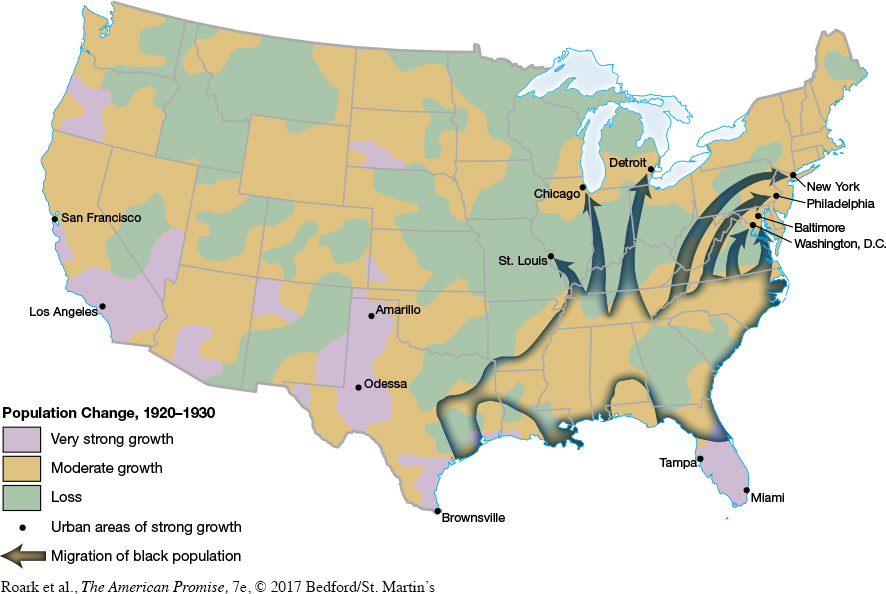The American Promise: Printed Page 666
The American Promise, Value Edition: Printed Page 605
The American Promise: A Concise History: Printed Page 691
Resistance to Change
Large areas of the country did not share in the wealth of the 1920s. By the end of the decade, 40 percent of the nation’s farmers were landless, and 90 percent of rural homes lacked indoor plumbing, gas, or electricity. Rural America’s traditional distrust of urban America turned to despair in the 1920s when the census reported that the majority of the population had shifted to the city (Map 23.2). Once the “backbone of the republic,” rural Americans had become poor country cousins. Urban domination over the nation’s political and cultural life and sharply rising economic disparity drove rural Americans in often ugly, reactionary directions.

The American Promise: Printed Page 666
The American Promise, Value Edition: Printed Page 605
The American Promise: A Concise History: Printed Page 691
Page 667Cities seemed to stand for everything rural areas stood against. Rural America imagined itself as solidly Anglo-